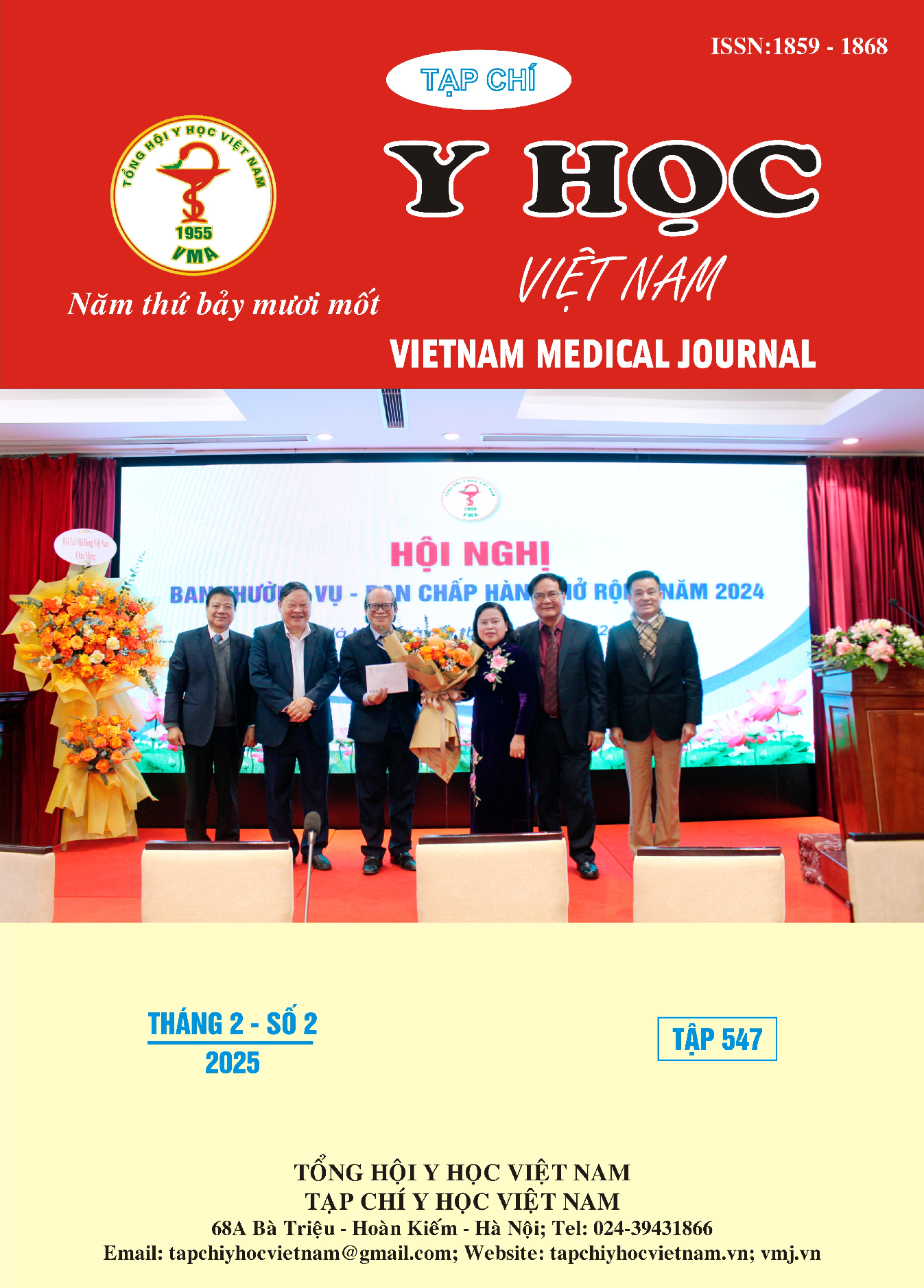CHARACTERISTICS OF ANKLE-BRACHIAL INDEX (ABI) IN HYPTERTENSIVE ELDERLY INDIVIDUALS AT CAN THO UNIVERSITY OF MEDICINE AND PHARMACY HOSPITAL IN 2023
Main Article Content
Abstract
Introduction: Hypertension (HTN) is a common chronic disease among the elderly, associated with various cardiovascular complications, including peripheral arterial disease (PAD). However, screening for PAD remains underused. Measuring the ankle-brachial index (ABI) is a simple and convenient method for screening and early detection of PAD. Objective: Evaluation of ABI characteristics and some risk factors related to PAD in elderly patients with HTN at Can Tho University of Medicine and Pharmacy Hospital in 2023. Methods: A cross-sectional descriptive study using a convenience sampling method was conducted on 51 elderly patients with HTN. ABI was categorized using the following thresholds: ABI≤0.9 (PAD), 0.91–1.4 (normal), and ABI>1.4 (arterial calcification). Information on risk factors for PAD was also collected. Results: The mean ABI of the study population was 1.23±0.19, with 5.9% of patients having ABI≤0.9. ABI was significantly associated with higher BMI and the severity of HTN. Conclusion: Measuring ABI is an effective tool for the early detection of PAD in elderly patients with HTN, especially among those with high BMI and severe HTN. The findings highlight the importance of managing body weight and blood pressure to prevent PAD in HTN patients.
Article Details
Keywords
ABI, elderly, hypertension, BMI
References
2. Cảnh NQ, Bích NTN, Sĩ NV. Đặc điểm bệnh động mạch chi dưới phát hiện qua khảo sát chỉ số huyết áp cổ chân-cánh tay trên người bệnh tăng huyết áp. Tạp chí Y học Việt Nam. 2024;539(1):322-326.
3. Hùng HV, Kiên NV, Hoàn ĐK. Thực trạng tăng huyết áp ở người từ 40 tuổi trở lên tại cộng đồng tỉnh Tuyên Quang năm 2021. Tạp chí Y học Việt Nam. 2022;516(1):155-160.
4. Quang NN, Hải NT, Hương ĐTT, và cộng sự. Khảo sát chỉ số ABI ở nhóm đối tượng có nguy cơ cao về tim mạch. Tạp chí Tim mạch học Việt Nam. 2024(108):61-67.
5. Sơn NT, Khuê LN, Hùng PM, và cộng sự. Hướng dẫn chẩn đoán và điều trị bệnh động mạch chi dưới. Tạp chí Tim mạch học Việt Nam. 2022(102):5-19.
6. Trang NTH, Dũng NT, Bảy NQ. Nghiên cứu đặc điểm tổn thương động mạch chi dưới ở bệnh nhân đái tháo đường typ 2 có bệnh thận mạn tính chưa điều trị thay thế bằng siêu âm Doppler mạch máu. Tạp chí Y học Việt Nam. 2024;536(1):127-131.
7. Gerhard-Herman MD, Gornik HL, Barrett C, et al. 2016 AHA/ACC Guideline on the Management of Patients With Lower Extremity Peripheral Artery Disease: A Report of the American College of Cardiology/American Heart Association Task Force on Clinical Practice Guidelines. Circulation. 2017;135(12):726-779.
8. Im SI, Rha SW, Choi BG, et al. Impact of uncontrolled hypertension on 12-month clinical outcomes following below-the-knee arteries (BTK) interventions in patients with critical limb ischemia. Clinical Hypertension. 2015;22:9.
9. Korhonen PE, Syvänen KT, Vesalainen RK, et al. Ankle-brachial index is lower in hypertensive than in normotensive individuals in a cardiovascular risk population. Journal of Hypertension. 2009;27(10):2036-2043.
10. Monteiro R, Marto R, Neves MF. Risk factors related to low ankle-brachial index measured by traditional and modified definition in hypertensive elderly patients. International Journal


